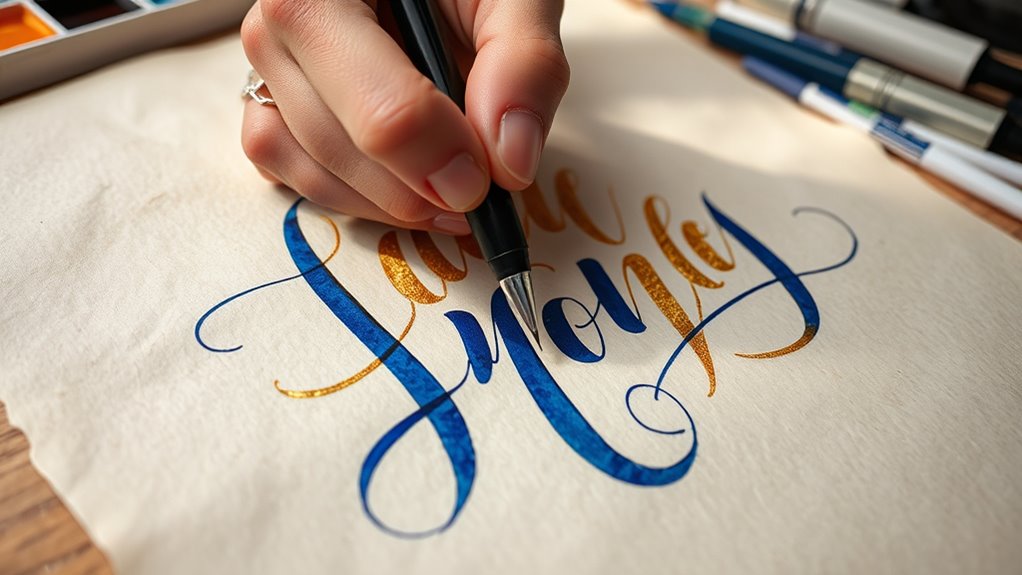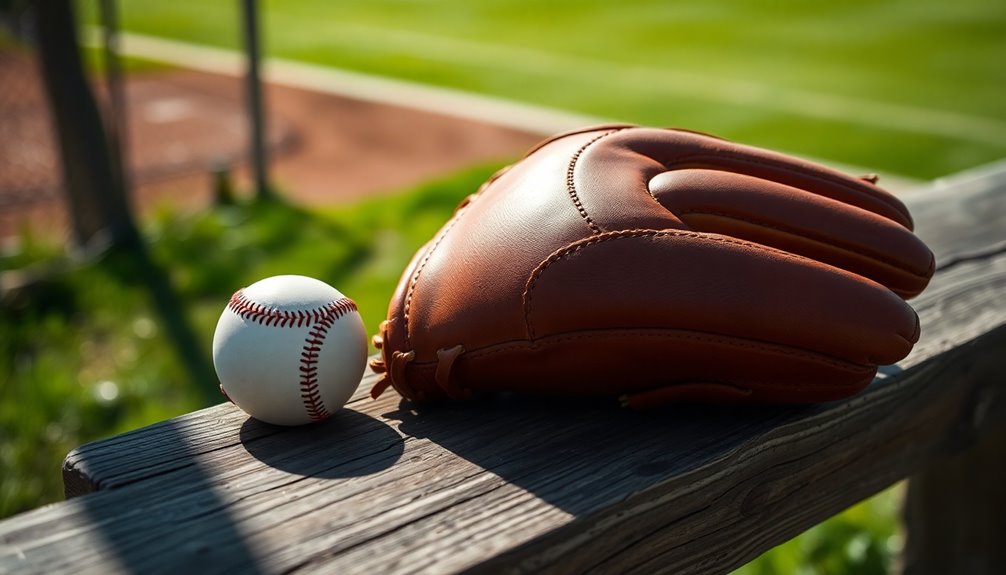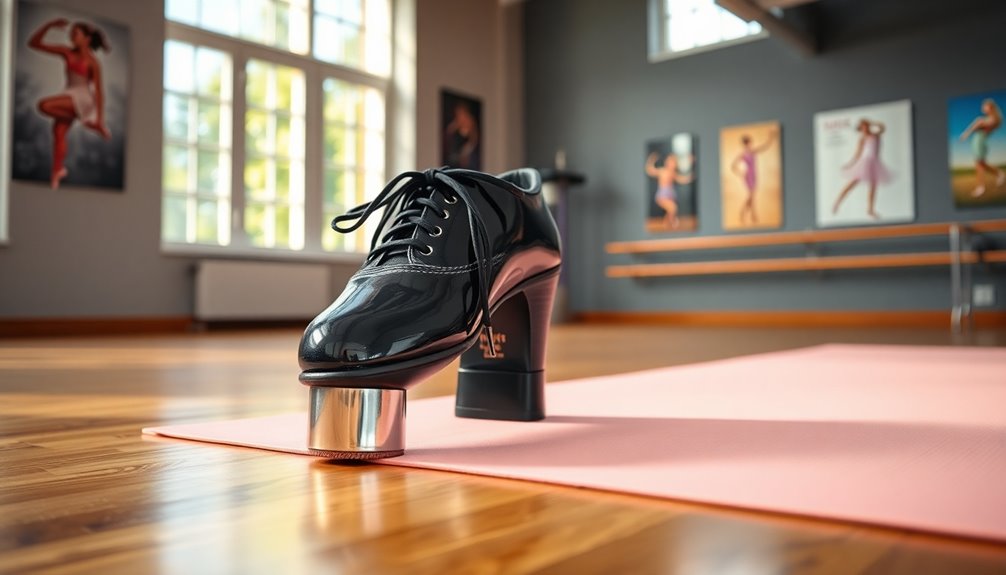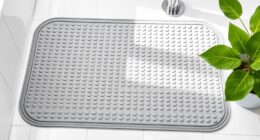To get started with calligraphy and modern lettering, you’ll want to explore their history and primary techniques. Focus on controlling your tools, like pens, brushes, and digital tools, to create varied strokes and effects. Experiment with styles, flourishes, and colors to develop your personal touch. Understanding traditional roots helps inspire modern flair. Keep practicing regularly, and you’ll soon see your skills grow. If you keep going, you’ll uncover even more ways to express your creativity.
Key Takeaways
- Calligraphy transforms simple lines into expressive, visually appealing art forms through mastery of technique and historical understanding.
- Modern lettering emphasizes playful, freeform styles using various tools like brushes, markers, and digital tablets.
- Developing personal style involves experimenting with traditional strokes, textures, embellishments, and composition.
- Historical calligraphy informs contemporary techniques and inspires creative expression.
- Regular practice and tool experimentation are essential for building control, muscle memory, and confidence in lettering skills.
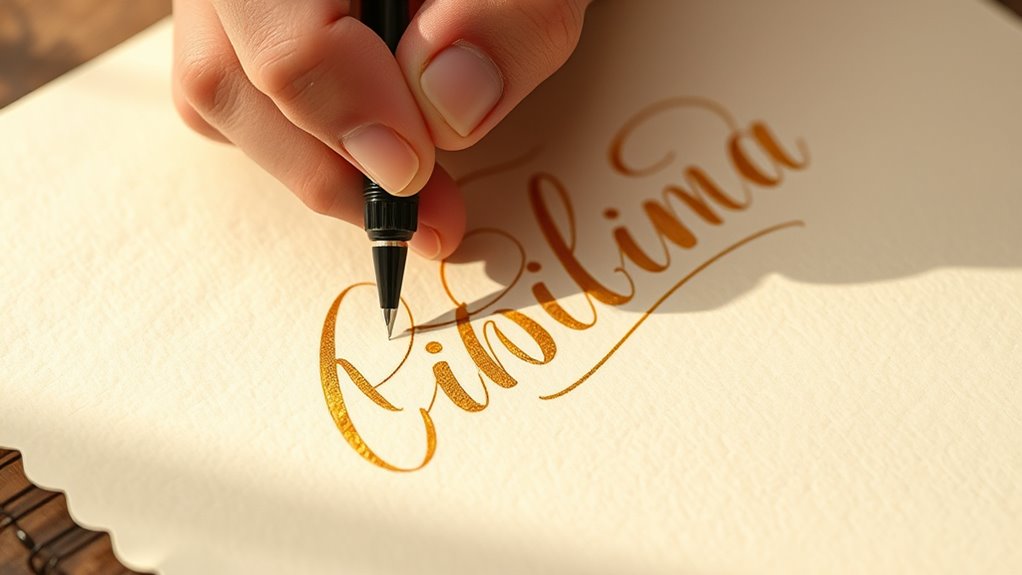
Have you ever wondered how artists transform simple lines into stunning works of art? The magic lies in calligraphy and modern lettering, where technique and history come together to create visually engaging designs. To truly appreciate this art form, it helps to understand the techniques overview and explore its historical origins. These elements form the foundation of your journey into lettering, giving you insight into how this craft evolved and how you can develop your skills.
The techniques overview of calligraphy and modern lettering covers a variety of skills, tools, and methods. You’ll learn how to control your pen or brush to produce different strokes, from delicate thin lines to bold, sweeping curves. Techniques such as consistent pressure application, proper angle holding, and stroke sequencing are essential. For modern lettering, emphasis is often placed on playful, freeform styles, combining traditional strokes with contemporary flair. This includes experimenting with different tools like brushes, markers, and digital tablets to achieve unique textures and effects. Developing muscle memory through practice helps you gain confidence, allowing your hand to flow naturally across the paper or screen. Additionally, understanding spacing, composition, and contrast will help you craft balanced, eye-catching designs. As you progress, you’ll learn how to incorporate flourishes, embellishments, and color to elevate your work. Recognizing the influence of historical calligraphy can provide additional inspiration and context for your creative process.
Frequently Asked Questions
What Are the Best Beginner Tools for Calligraphy?
To start with calligraphy, you need basic tools like a pointed pen or brush pen, quality paper, and ink. These tools help you explore calligraphy history and develop your lettering techniques. A beginner-friendly set makes practicing easier, allowing you to focus on mastering strokes and styles. As you practice regularly, you’ll improve your skills and gain confidence, creating beautiful lettering that reflects the rich history behind this art form.
How Long Does It Take to Master Modern Lettering?
Mastering modern lettering varies for everyone, but with consistent practice and patience, you’ll see progress in a few months. It takes dedicated effort to develop your skills and refine your style. Practice consistently, focus on technique, and stay patient during setbacks. Remember, steady practice and patience development are key to becoming proficient. Keep creating, and over time, you’ll notice significant improvement in your modern lettering abilities.
Can I Learn Calligraphy Online Without Prior Art Experience?
Yes, you can learn calligraphy online without prior art experience. Online learning resources make it easy to explore calligraphy history and techniques at your own pace. Many courses provide step-by-step instructions, so you can build skills gradually. With dedication, you’ll develop your style and understanding of calligraphy, even as a beginner. Just practice regularly, use quality tools, and enjoy the creative journey.
What Paper Types Are Ideal for Practicing Lettering?
Perfect paper paves the path for practice. You’ll want smooth, sturdy surfaces like bristol or marker paper, which handle ink absorption without bleeding or blotting. Textured papers, such as cold-pressed watercolor paper, can add character but might challenge your control. Focus on paper with consistent textures and ideal ink absorption, so your strokes stay sharp and smooth. The right paper makes practicing lettering more pleasurable, precise, and productive.
Are There Specific Styles Suited for Digital Calligraphy?
Yes, certain calligraphy styles suit digital lettering techniques best. For example, modern calligraphy and brush script translate well to digital formats because their fluid, expressive strokes mimic natural brush movements. You should focus on styles that emphasize curves and organic lines, making digital tools easier to emulate. Practice with these styles to refine your digital calligraphy skills, and you’ll find your work more authentic and dynamic.
Conclusion
Now that you’ve explored the basics of calligraphy and modern lettering, you’re ready to start creating your own beautiful designs. Remember, practice makes perfect, and every stroke brings you closer to mastering this art. So, why not pick up your pen and see where your creativity takes you? With patience and passion, you’ll turn simple lines into stunning works of art. Are you ready to transform your handwriting into a personal masterpiece?
